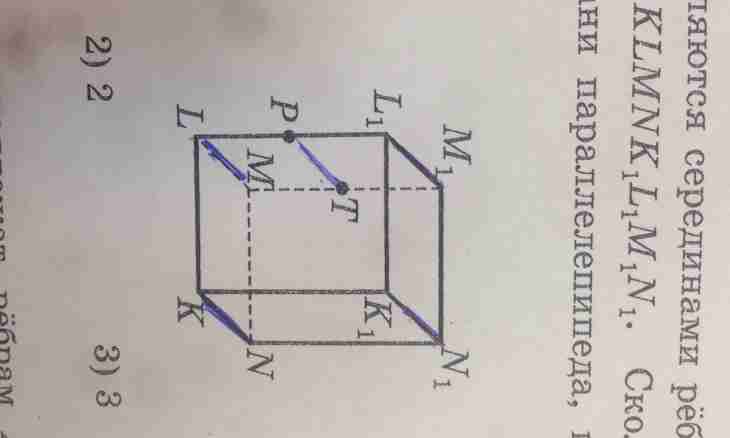You had a difficulty in the solution of the geometrical task connected with a parallelepiped. The principles of the solution of such tasks based on properties of a parallelepiped are stated in a simple and available form. To understand – means to solve. Similar tasks will not cause in you difficulties any more.
Instruction
1. For convenience we will enter designations: And yes In the parties of the basis of a parallelepiped; With – its side side.
2. Thus, in the basis of a parallelepiped the parallelogram with the parties lies And yes V. Parallelogramm is a quadrangle which opposite sides are equal and parallel. Follows from this definition that against the party And the party equal to it lies And. As opposite sides of a parallelepiped are equal (follows from definition), its top side has 2 parties equal too And. Thus, the sum of all four of these parties is equal 4A.
3. The same can be told and about V. Protivopolozhnaya's party the party is equal to it in the basis of a parallelepiped Century. The top (opposite) side of a parallelepiped has 2 parties equal too V. Summa of all four of these parties is equal 4B.
4. Side sides of a parallelepiped are parallelograms too (follows from properties of a parallelepiped). The edge With at the same time is the party of two next sides of a parallelepiped. As opposite sides of a parallelepiped are in pairs equal, all his side edges are equal among themselves and equal S. Summa of side edges - 4C.
5. Thus, sum of all edges of a parallelepiped: 4A+4B+4C or 4 (And + B+C) the Special case of a direct parallelepiped – a cube. The sum of all his edges is equal 12A. Thus, the solution of a problem of rather spatial body can always be consolidated to the solution of tasks with flat figures into which this body breaks.
